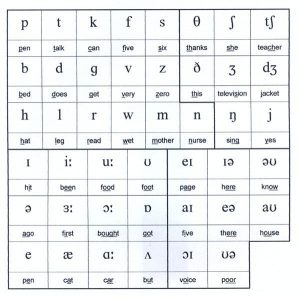by Nicole Gagliardi

Coming into Carolina, I knew for a definite fact that there were three things I wanted to get involved in and study in my academic experience: to learn about the intricacies of communication and the enigma that is human language, find a field in which I can bring my dreams of helping others to fruition, and continue my musical education. Initially, I had no idea how to bring all these desires together into one cohesive game plan. I first decided to declare a major in linguistics so that the science of language would be my focus. At the beginning of my sophomore year I added a minor in Speech and Hearing Sciences, with the intention that I would still be studying language like I had wanted, but also be able to focus on communication from a clinical standpoint, and be able to help those with communication abnormalities and disorders.
Still wanting to be present in the world of music, I was thankful to secure a job with the Music Department in Hill Hall and enroll in a voice lesson class. On one particular day during my voice lesson, we were discussing the anatomy of the respiratory system and vocal tract, all of which were things that were talked about (albeit more in-depth) in my Anatomy for Speech and Hearing class. Naturally, I began to wonder just how much overlap is there between music and singing, linguistics, and the science of sound? It seemed intuitive initially- songs are just messages with melodies, more or less. I became more and more excited about discovering more links between the different disciplines.

With the help of the music department’s communications coordinator and her understanding of my main field of study, I decided to sit in on Professor Timothy Sparks’ Diction for Singing class. I was first struck by the heavy use of the International Phonetic Alphabet, commonly abbreviated IPA, which is a system of symbols in which each symbol represents one specific sound. These symbols can be used to phonetically transcribe any word from any language, so that someone who understands IPA can easily pronounce those words. I obviously knew that a diction class that focuses on singing wouldn’t be using IPA for the exact same purposes as other language-related fields; for example, in phonology (a subset of linguistics that focuses on the systematic organization of speech sounds in words), IPA is used to transcribe a variety of words that have sounds in common with each other, and use those transcriptions to make it more clear of in what environments those sounds occur and why. I’ll give a brief example, because it can be very confusing: if you take the words mats, rods, dogs, cats, logs, snobs, and hips, these words all have one feature in common with each other: the plural –s ending. However, if you try saying these out loud to yourself and focus hard on the pronunciation, you’ll notice that in rods, dogs, logs, and snobs, the ‘s’ sounds more like a ‘z’, and in mats, cats, and hips, the ‘s’ sounds like a regular ‘s’, like a hiss. Linguists can use this kind of information to transcribe these words into IPA to see this pattern (their transcriptions would be mæts rɔdz, dɔgz, kæts, lɔgz, snɔbz, and hɪps, respectively). The reason for this translation from English spelling to IPA doesn’t change the sounds at all, but it lets linguists see this pattern concretely and analyze it from there, since languages often don’t have a tight correspondence between spelling and pronunciation. With speech-language pathology, the international phonetic alphabet can be used to transcribe what a patient is saying and compare it to normal speech to determine if there is a disorder or an impediment and then create a treatment that’s tailored to the specific person.
Because of my exposure to the clinical side of IPA usage I had conflicting feelings about the diction class. The clinical side of me felt like vowels were being too rounded or low in the mouth (briefly, this just refers to how tight of an “o” shape your mouth makes or where your tongue is in your mouth; a low vowel has the tongue far away from the roof of your mouth, whereas with a high vowel, your tongue and the roof of your mouth are very close together). But as a singer, it made complete sense to me and anything else would have sounded wrong. Throughout my many years of choir, there has always been as strong of an emphasis on getting the melodies and rhythms correct as there is on getting your diction right. The goal is to enunciate and make the words clear, without sounding overly harsh or destroying the vocal tone; for example, singing “bath” like a British person is good; singing it somewhat like the ‘a’ in cat will surely get you reprimanded.
While mesmerized watching the other students practice these sounds, I got to wondering: why is it that singing sounds so different than talking to begin with? And why is it that someone with the thickest Scottish accent you’ve ever heard sound no different from your average American when singing? My guess is that it has a lot to do with the singing diction classes required of voice students. Stayed tuned for the second installment of this blog series to find out!
